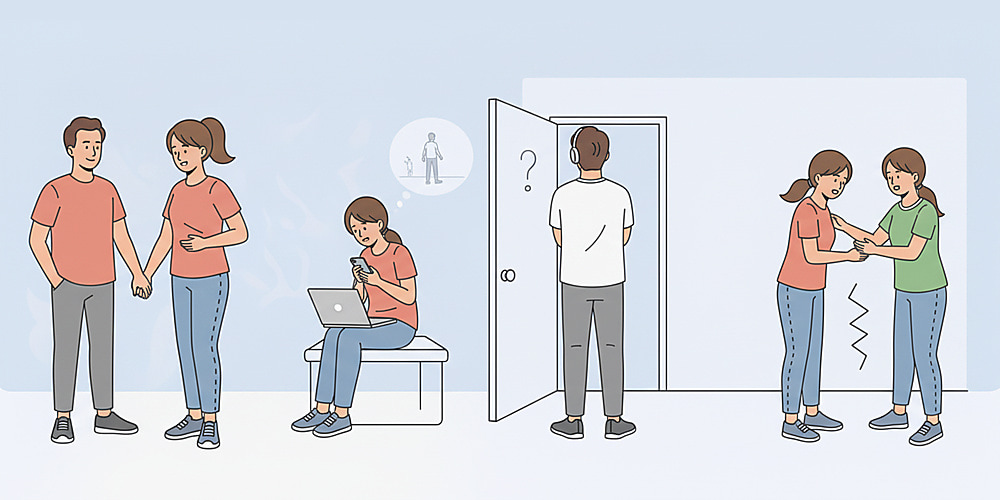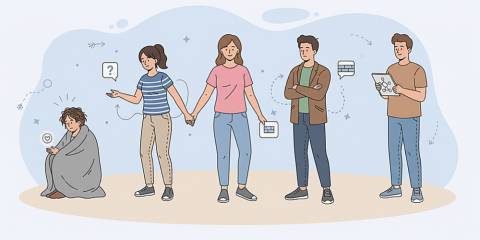Discover and Understand Attachment Styles Fully

Attachment theory explores the emotional bonds between individuals and how these bonds impact our relationships. Understanding the different types of attachment styles can provide valuable insights into our own behavior and interpersonal dynamics. From infancy, attachment styles influence how we connect with others, shaping our interactions throughout life.
The Basics of Attachment Theory
The concept of attachment theory was first developed by John Bowlby, a British psychologist, who researched the impact of early attachments on emotional development. The theory suggests that our primary relationships with caregivers can significantly influence our attachment theory types in adulthood. Attachment theory is pivotal for understanding the 4 different types of attachment that people exhibit.
- Attachment shapes interpersonal relationships.
- Early bonding influences adult attachment style.
- Understanding attachment enhances relationship dynamics.
Exploring the Four Main Attachment Styles
The four primary attachment styles are: secure, anxious, avoidant, and disorganized. This style affects relationships in unique ways. Recognizing these attachment style types can lead to healthier behaviors and more fulfilling connections.
Secure Attachment Style
In the realm of interpersonal connections, types of attachment styles in relationships play a significant role in shaping our interactions and experiences. Among these, individuals who exhibit a secure attachment often find a comfortable balance between intimacy and independence. This particular attachment style fosters trust and encourages the maintenance of healthy boundaries. As a result, relationships characterized by secure attachment are frequently stable and satisfying. Moreover, those who possess secure attachment styles typically demonstrate effective communication skills and adept emotional management.
Anxious Attachment Style
People often express different types of attachment styles in their relationships, one of which is the anxious attachment style. This particular style is characterized by a constant need for reassurance and a deep craving for intimacy. Those who exhibit this style have a prevalent fear of being abandoned and may display clingy behaviors. By comprehending these attachment styles, we can handle relationship dynamics more effectively. It enables us to foster clear communication and provide mutual support, thereby building stronger bonds and healthier relationships.
Avoidant Attachment Style
People with avoidant attachment values independence highly and often distance themselves in relationships. They might struggle with emotional closeness and prefer self-reliance. Recognizing this attachment type quiz can help navigate challenges in establishing meaningful connections.
Disorganized Attachment Style
In the intricate dynamics of human interactions, the fearful-avoidant style, attachment types in relationships, tend to be marked by a certain level of unpredictability and apprehension. Individuals with this attachment type might crave emotional closeness, yet they may simultaneously experience fear when faced with intimacy. This polarizing behavior can indeed complicate relationships, creating a need for a thoughtful, understanding approach to find a resolution.
The Benefits of Understanding Attachment Styles
Recognizing the four types of attachment styles helps improve emotional intelligence and relationship satisfaction. By identifying your own attachment style, you can develop strategies to overcome challenges and enhance personal growth. Additionally, understanding your partner's style can lead to stronger connections and mutual respect.
- Enhances emotional awareness.
- Improves communication skills.
- Fosters empathetic relationships.
Table of Attachment Styles and Characteristics
| Attachment Style | Characteristics |
|---|---|
| Secure | Trusting, Positive, Communicative |
| Anxious | Clingy, Overly Dependent |
| Avoidant | Independent, Emotionally Distant |
| Disorganized | Fearful, Unpredictable |
Practical Steps in Using Attachment Styles for Better Relationships
Embracing the understanding of different attachment types can transform your interactions and foster better relationships. Here are some steps to consider:
- Identify your attachment style with an attachment type test.
- Address past attachments influencing current relationships.
- Communicate openly with partners about attachment-related feelings.
- Pursue personal development to enhance attachment security.
FAQs About Attachment Styles
- What are the four attachment styles?
The four types of attachment are secure, anxious, avoidant, and disorganized. Each reflects distinct behaviors and emotional responses in relationships.
- How does attachment style affect relationships?
Attachment styles in relationships influence trust, communication, and emotional intimacy. Recognizing these patterns helps improve interactions and satisfaction.
- Can attachment styles change over time?
Yes, individuals can shift from insecure to more secure attachment styles through self-awareness, therapy, and intentional growth.
- How can I identify my attachment style?
Taking an attachment type test or quiz provides insights into your dominant style, creating a foundation for personal growth and relationship improvement.
- Why is understanding attachment styles important?
Recognizing different attachment style types fosters emotional intelligence, enhances relationship dynamics, and supports personal development through better communication and empathy.
Latest News



